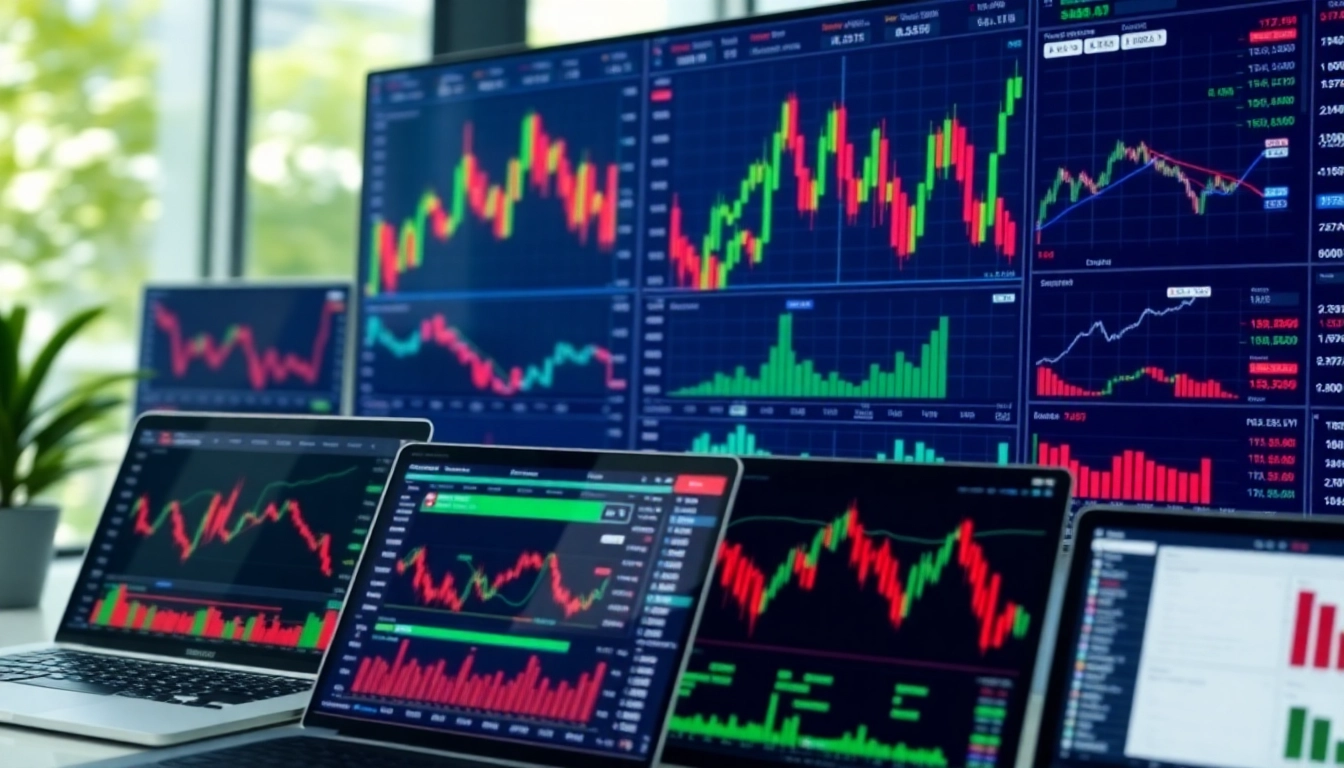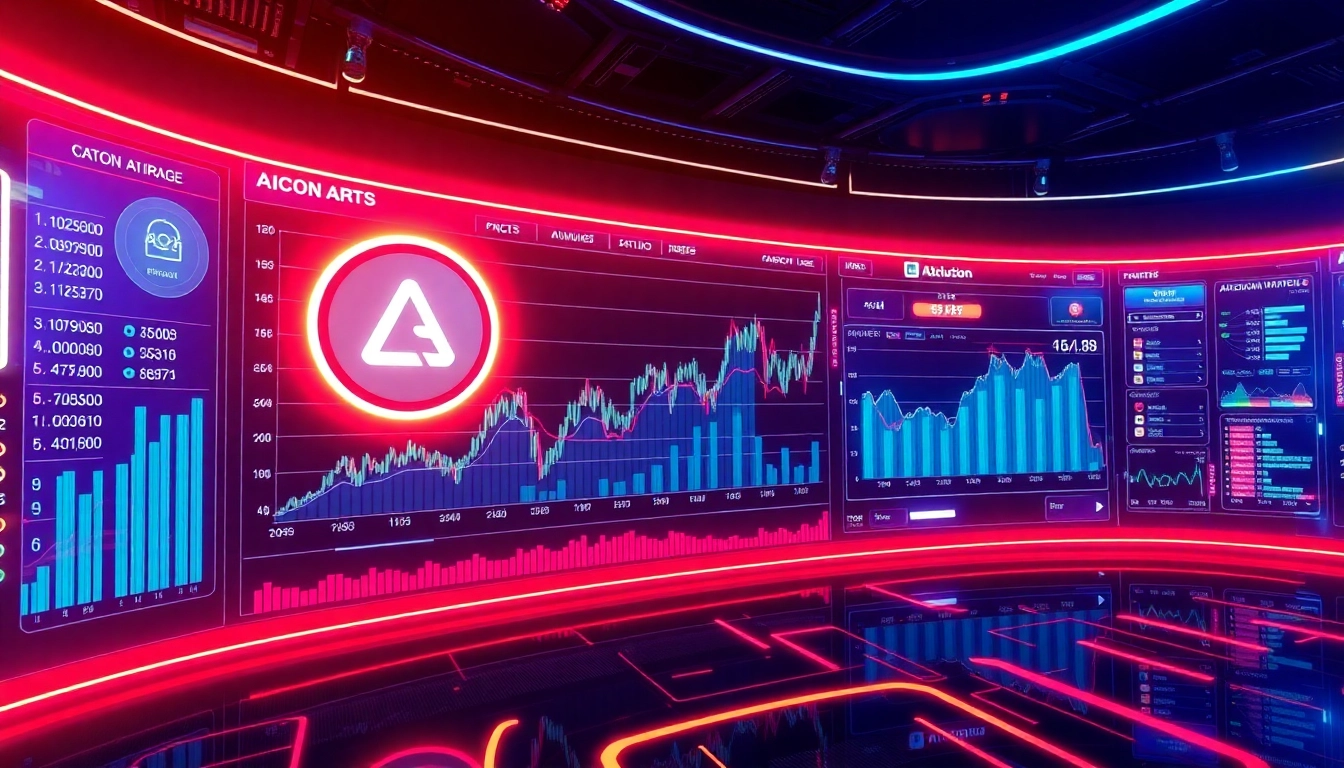Understanding the Fundamentals of Trading View
In the fast-paced world of modern trading, having access to reliable and comprehensive charting tools is essential. trading view has emerged as one of the most popular platforms that cater to both novice traders and seasoned investors. Its intuitive interface, extensive features, and real-time data integration make it a central hub for market analysis. But what exactly is Trading View, and how does it operate within the broader landscape of financial analysis tools? This section explores the core principles underlying Trading View, its functional structure, and why it has become an indispensable resource for traders worldwide.
What is Trading View and How It Works
Trading View is a comprehensive financial visualization platform designed to enable traders and investors to analyze a wide array of markets, including stocks, cryptocurrencies, forex, commodities, and more. At its core, Trading View provides advanced charting tools, real-time market data, and a social component that fosters community-driven insights and shared analysis. Unlike traditional trading software, Trading View is cloud-based, allowing users to access their portfolios and charts from any device with internet connectivity.
The platform works by aggregating streaming data from multiple exchanges and financial data providers, presenting it through dynamic charts customizable with various technical indicators and drawing tools. Users can create personalized watchlists, set alerts based on specific market conditions, and even develop custom scripts and algorithms to automate their strategies. Its seamless integration with trading accounts via supported brokers further enhances its utility, transforming passive analysis into active trading execution.
Key Features for Traders and Investors
Trading View boasts a suite of features that cater to diverse trading styles, from day trading to long-term investing. Key features include:
- Advanced Charting: Over 100 pre-built technical indicators, drawing tools, and multiple chart types (candlestick, bar, line, etc.) allow for detailed market analysis.
- Custom Watchlists: Users can track their favorite assets and set alerts for price movements, news, or indicator signals.
- Social Networking: A vibrant community where traders share ideas, strategies, and insights, fostering collaborative learning and trend discovery.
- Backtesting and Strategy Development: Support for creating, testing, and optimizing trading strategies using Pine Script, Trading View’s proprietary scripting language.
- Multi-Device Accessibility: Availability across web browsers, desktop applications, and mobile apps ensures flexibility and on-the-go analysis.
These features collectively empower traders to make informed decisions swiftly, supported by powerful visualization and community insights.
Comparing Trading View with Competitors
While Trading View offers a robust environment for market analysis, understanding how it stacks up against competitors like Webull or MetaTrader can inform better decision-making.
Compared to traditional trading platforms such as MetaTrader, Trading View excels in its user-friendly interface, social features, and extensive charting options. It is more accessible for beginners due to its web-based nature and free tier, while MetaTrader often requires software installation and has a steeper learning curve.
Webull, another popular alternative, provides integrated trading and analysis but lacks the same depth of social community features and customizable scripting that Trading View offers. Additionally, Trading View’s compatibility with multiple brokers enhances its versatility, allowing traders to analyze data independently and execute trades through their preferred platforms.
Ultimately, Trading View occupies a unique niche—combining advanced technical analysis, community interaction, and cross-platform accessibility—making it suitable for a broad spectrum of users seeking comprehensive market insights.
Using Trading View for Effective Market Analysis
Setting Up Custom Charts and Watchlists
To maximize trading efficiency, traders should begin with personalized setups. Trading View’s interface allows for the creation of custom charts where users can select preferred chart types, timeframes, and indicators. For example, a day trader might set up multiple charts with different timeframes — 1-minute, 5-minute, and 15-minute charts — to identify short-term trends.
Creating watchlists involves selecting assets based on your trading focus or investment interests. You can organize symbols into categories and configure alerts for specific price levels or technical signals. For instance, setting an alert for a moving average crossover on a stock like AAPL can provide timely buy or sell signals.
Best practices include labeling your charts, periodically updating watchlists, and leveraging saved templates to streamline analysis workflows.
Utilizing Technical Indicators and Tools
Technical indicators are foundational to market analysis, providing quantifiable insights into price movements and trend reversals. Trading View offers a vast library of indicators such as Relative Strength Index (RSI), Moving Averages (MA), Bollinger Bands, and Fibonacci retracements.
Effective traders customize indicator parameters to suit specific assets and trading styles—setting shorter periods for volatile cryptocurrencies or longer spans for stable equities. Combining multiple indicators, like using RSI alongside MACD, can enhance signal reliability.
Drawing tools like trendlines, channels, and chart patterns help visually interpret market sentiment. For example, identifying a descending triangle pattern can signal potential price breakouts, guiding strategic entries or exits.
Learning to interpret indicator signals critically and avoiding indicator overload are common challenges; practicing with historical data and backtesting strategies can mitigate these issues.
Interpreting Market Trends with Trading View
Beyond individual indicators, understanding overarching market trends is vital for long-term success. Trading View facilitates this through features like trendlines, chart patterns, and volume analysis.
Analyzing multiple timeframes helps in confirming trend directions—for instance, identifying a bullish long-term trend while observing a short-term pullback provides a nuanced view for tactical trading.
Community ideas and published analyses on Trading View also serve as valuable references, revealing how seasoned traders interpret similar market conditions. Practicing scenario analysis and staying disciplined in following your trading plan are key strategies for successful trend interpretation.
Advanced Strategies and Integration Techniques
Automating Alerts and Signals
Automation is a powerful feature that reduces manual monitoring workload. Trading View allows users to set custom alerts based on price levels, indicator crossovers, or even complex scripts written in Pine Script. For example, a trader can program an alert to notify them when a security’s RSI drops below 30, indicating an oversold condition.
This capability ensures timely responses to market movements, especially during volatile periods. Alerts can be configured via email, SMS, or push notifications across devices, maintaining seamless communication.
Integrating these alerts with your trading system transforms analysis into execution, enabling rapid decision-making without constant oversight.
Integrating Trading View with Trading Platforms
Trade execution is streamlined by linking Trading View with supported brokers such as Binance, OANDA, or Interactive Brokers. This integration allows traders to review charts and execute trades directly from the platform, minimizing delays and errors.
Steps for integration typically involve authentication with your broker’s API, configuring trade parameters within Trading View, and testing the setup to ensure reliability. Proper understanding of order types and risk management is essential during this phase.
By combining analysis and trading execution within a single interface, traders improve efficiency and maintain better control over their strategies.
Developing and Testing Trading Strategies
Strategy development on Trading View leverages Pine Script, a user-friendly scripting language designed for creating custom indicators and backtesting trading models. This feature empowers traders to rigorously test hypotheses against historical data before risking real capital.
A typical process involves defining entry and exit conditions, setting stop-loss and take-profit levels, and running simulations to evaluate performance metrics like profitability, drawdown, and win rate.
Refining strategies through iterative testing enables traders to adapt to changing market dynamics. Sharing scripts within the community fosters feedback and collaborative improvement, accelerating learning and skill development.
Boosting Your Trading Performance with Trading View
Best Practices for Live Trading Sessions
During live trading, discipline and preparation are crucial. Always adhere to your predefined trading plan, use real-time alerts to monitor critical levels, and avoid emotional decision-making. Trading View’s multi-monitor setups and alert systems ensure you stay informed of market shifts.
Regularly reviewing past trades and updating your analysis methods contribute to continuous improvement. Using simulated trading environments or paper trading modes within Trading View can help hone skills without financial risk.
Monitoring Market Volatility and News
Market volatility often coincides with news releases or macroeconomic events. Trading View offers integrated news feeds and sentiment analysis tools that provide context for technical signals. Keeping track of economic calendars, economic indicators, and geopolitical developments enables traders to anticipate period-specific risks.
Adjusting trading strategies during high-volatility periods, such as tightening stop-losses or reducing position sizes, helps preserve capital. Combining fundamental insights with technical analysis enhances decision quality.
Performance Metrics to Track Your Success
Measuring trading effectiveness involves monitoring key performance indicators like profit factor, win rate, average return per trade, and maximum drawdown. Trading View’s built-in performance analytics tools facilitate this analysis, providing visual summaries and detailed reports.
Consistent review of these metrics helps in identifying strengths, weaknesses, and areas for improvement, fostering a data-driven approach to trading development.
Future Trends and Continual Learning in Trading View
Upcoming Features and Updates
Trading View continuously evolves, with upcoming features such as enhanced AI-driven analysis, expanded scripting capabilities, and deeper broker integrations. Staying updated with platform releases ensures traders leverage new tools to optimize their strategies.
Engaging with beta programs and community forums can provide early insights into these developments.
Community Resources and Expert Insights
The active Trading View community offers a wealth of resources, including published ideas, tutorials, webinars, and expert analyses. Participating in forums and following top contributors accelerate learning curves and broaden perspectives.
Many experienced traders share their strategies openly, which can be adapted and refined within your trading plan.
Training and Certification Opportunities
To deepen understanding, various online courses and certifications focus on technical analysis, algorithmic trading, and Trading View platform mastery. Formal training enhances analytical skills, risk management, and strategic thinking, essential for sustained success.
Investing in education ensures traders stay ahead amid changing markets and evolving tools.



